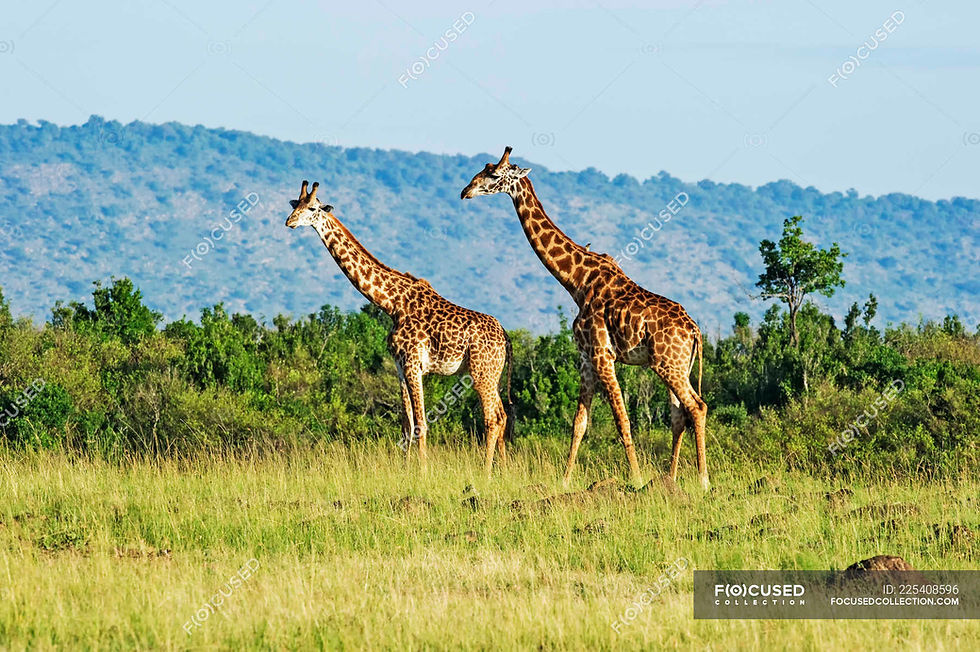The towers are falling - a silent extinction
- activateeditor
- Feb 15, 2020
- 3 min read
Updated: Mar 3, 2020
By Naomi Grewan
With their beautiful spotted coats, legs of six meters and hearts of more than 11kg, giraffes have been unable to withstand the destruction of the human race. Giraffes have quietly made their way onto the ever-growing list of endangered species, facing possible extinction.
According to a recent assessment of global nature loss by the United Nations, one million different species are being threatened with extinction. This is a result of uncontrollable resource consumption and the rapid increase of the human population.

Giraffes are a globally recognised animal that is often seen in nature reserves all over the world. In 2016 giraffes were labeled ‘vulnerable.’ Within the last three years, that status was changed to endangered. Giraffes have also gone locally extinct in several African countries (including Burkina Faso, Guinea, Eritrea, Nigeria, and Senegal). Without any serious action, we will soon have no giraffes left.
Protected areas still exist for giraffes and other wildlife, but doesn’t stop giraffes from being poached for their meat or skin. This isn't the first time these creatures are facing extinction. In 1996, giraffes in West Africa faced extinction for this exact reason. With giraffes and human villages sharing common land, conflict occurred and giraffes were instantly killed to prevent their interference.
With the help of various wildlife organisations, wildlife conservation areas were formed and formally protected in West Africa. The giraffes successfully evaded extinction.
Now, giraffes are facing extinction for the second time. Unlike other endangered species, giraffes are not facing major threats from poachers (although it is still a contributing factor), but rather lack of habitation. Urbanisation's take over has led to the rapid decline of their natural habitat. What is left of the natural landscape is also affected by climate change, ecological changes caused by mining and farming and, in the case of some countries, civil wars?
Giraffes serve a vital role in the ecosystem in the Savannah. As the tallest mammals, they live in harmony with everything around them. Eating from the tops of trees and living their lives without bothering the grazing mammals down below. They often also serve as a warning system for other animals. Due to their height, giraffes can spot predators from very far away and can alert those around them about a threat nearby. When the giraffes run, everyone runs. Without giraffes, the ecosystem across the Savannah could completely collapse.
Giraffes are divided into nine subspecies, five of which are in serious decline. With a total of only 97 562 giraffes in the world in 2015, now there are less than 10 000 of each subspecies left. The approaching giraffe extinction is labeled a ‘silent extinction’ by National Geographic because nobody knows why the number of giraffes is decreasing so drastically. In the last 15 years, it has gone from 155 000 to 80 100.
As mentioned above, habitat loss has been the leading cause of this decline. Pair that with poaching and it starts to make sense how giraffes have been dying out for years without any alarm. Scientists know very little about giraffe behaviour - mainly because of the timid nature of giraffes. This leads to the problem of knowing (or not knowing) how to conserve the species.

World Giraffe Day is on 21 June. The Giraffe Conservation Foundation introduced this day with hopes to raise awareness for giraffes and raise funds to help support the ongoing conservation of giraffes.
A group of giraffes is called a tower. Much like man-made towers, a tower of giraffes rises beyond the rest. They are a unique species and the world would not be the same without them. When the steeple of Notre Dame was about to collapse, humanity sprinted to save and restore it. This natural tower should be generating equal panic.









Comments